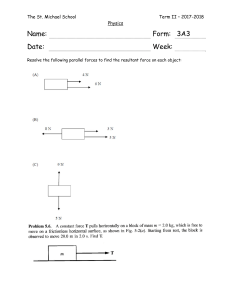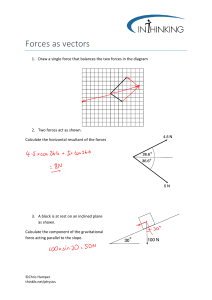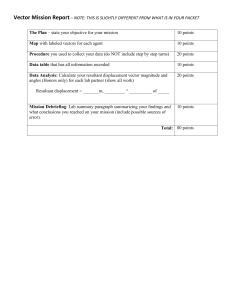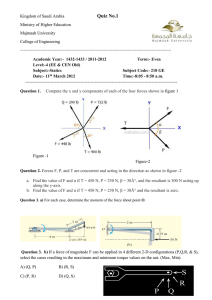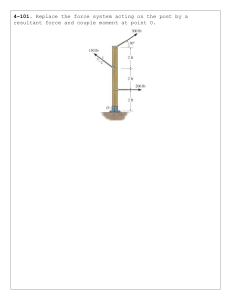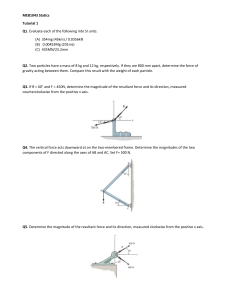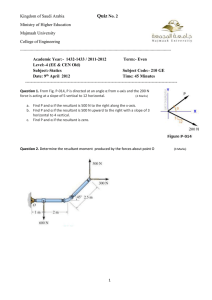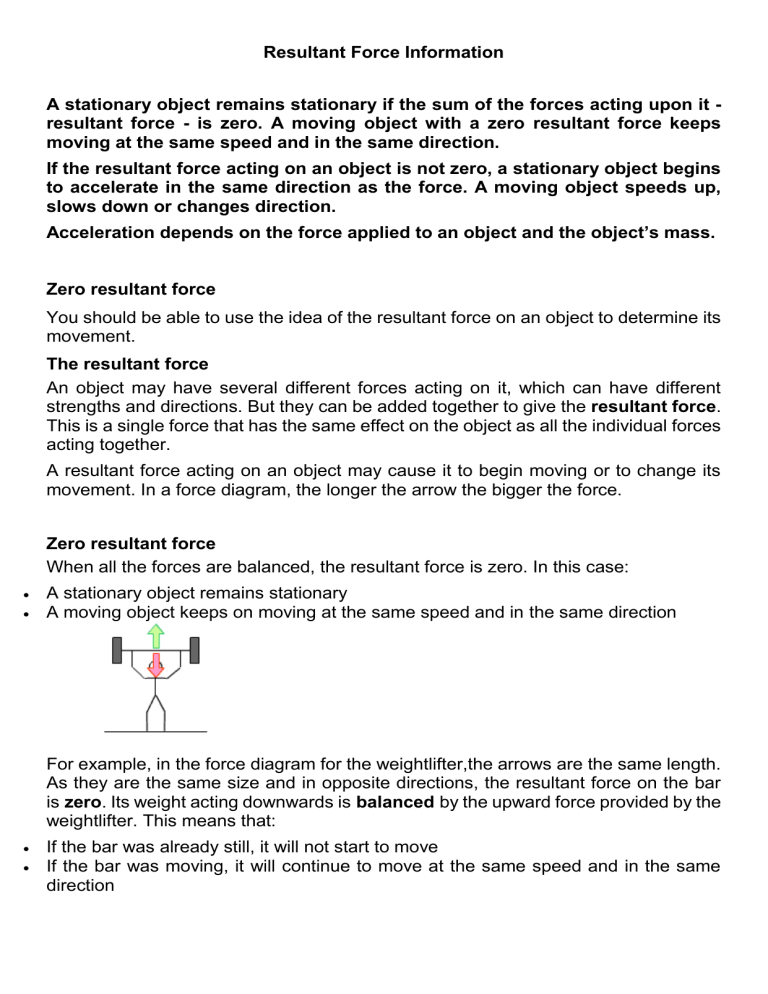
Resultant Force Information A stationary object remains stationary if the sum of the forces acting upon it resultant force - is zero. A moving object with a zero resultant force keeps moving at the same speed and in the same direction. If the resultant force acting on an object is not zero, a stationary object begins to accelerate in the same direction as the force. A moving object speeds up, slows down or changes direction. Acceleration depends on the force applied to an object and the object’s mass. Zero resultant force You should be able to use the idea of the resultant force on an object to determine its movement. The resultant force An object may have several different forces acting on it, which can have different strengths and directions. But they can be added together to give the resultant force. This is a single force that has the same effect on the object as all the individual forces acting together. A resultant force acting on an object may cause it to begin moving or to change its movement. In a force diagram, the longer the arrow the bigger the force. Zero resultant force When all the forces are balanced, the resultant force is zero. In this case: A stationary object remains stationary A moving object keeps on moving at the same speed and in the same direction For example, in the force diagram for the weightlifter,the arrows are the same length. As they are the same size and in opposite directions, the resultant force on the bar is zero. Its weight acting downwards is balanced by the upward force provided by the weightlifter. This means that: If the bar was already still, it will not start to move If the bar was moving, it will continue to move at the same speed and in the same direction Non-zero resultant force When all the forces are not balanced, the resultant force is not zero. In this case, an object accelerates in the direction of the resultant force. This means that: A stationary object begins to move in the direction of the resultant force A moving object speeds up, slows down or changes direction depending on the direction of the resultant force In this diagram of the weightlifter, the resultant force on the bar is not zero. The upwards force is bigger than the downwards force. The resultant force acts in the upwards direction. There are three possibilities: The bar was still but begins to move upwards The bar was already moving upwards and so moves upwards faster than before The bar was already moving downwards and so moves downwards more slowly than before Note that you cannot tell which possibility is correct unless you know if and how the bar was already moving. In the next diagram of the weightlifter, the resultant force on the bar is again not zero. The upwards force is smaller than the downwards force. The resultant force acts in the downwards direction. Again there are three possibilities: The bar was still but begins to move downwards The bar was already moving downwards and so moves downwards faster than before The bar was already moving upwards and so moves upwards more slowly than before
